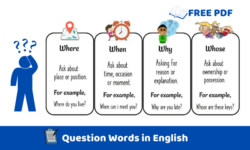Easiest Languages to Learn for English Speakers
In this comprehensive guide to the easiest languages to learn for English speakers, we navigate the diverse realm of language learning, ranking each language based on common vocabulary, sentence structure and ease of pronunciation. Whether you’re looking to enhance your travel adventures, improve your career prospects by taking German language courses online or immerse yourself in the richness of global cultures, our curated list, based on the latest data from the Foreign Service Institute (FSI), provides a roadmap for your linguistic journey.
From the close-knit Dutch to the romance of Spanish and Italian, each language offers unique benefits for English speakers seeking a smooth transition. Delve into the intricacies of Germanic and Romance languages, explore the rhythmic flow of Austronesian tongues and discover the simplicity of Bantu languages. Take the opportunity to broaden your horizons and cultivate a deep appreciation for global communication. Embark on the exciting adventure of language learning, where every word you learn is a key to unlocking doors to exciting opportunities around the world!
1. Dutch: Closely related to English, especially in vocabulary, though pronunciation might pose some challenges.
2. Norwegian: Being a Germanic language like English, it shares vocabulary and has a straightforward pronunciation.
3. Spanish: As a Romance language with many English-related words and similar sentence structures, it’s considered relatively easy.
4. Portuguese: Stemming from Latin like Spanish, it shares similarities in vocabulary and structure with English.
5. Italian: A Romance language with widely used vocabulary in English, similar sentence structure, and logical pronunciation.
6. French: Although pronunciation can be tricky, it shares many similarities in vocabulary with English.
7. Swedish: A Germanic language with straightforward grammar rules, though pronunciation and some compound words may pose challenges.
8. Romanian: Despite being surrounded by Slavic languages, Romanian is a Romance language with similarities to Italian, Spanish, and French.
9. Danish: A Germanic language with familiar vocabulary but more challenging pronunciation.
10. German: A Germanic language with a common alphabet and comparable sentence structure, though longer compound words might be challenging.
11. Indonesian: An Austronesian language with straightforward grammar and phonetic spelling.
12. Malay: Another Austronesian language, similar to Indonesian, with differences in spelling, pronunciation, and vocabulary.
13. Swahili: A Bantu language with widespread use in East Africa, featuring relatively easy pronunciation and some similarities to English.
14. Filipino Tagalog: An Austronesian language with a pronunciation that’s not difficult, but sentence structure differs from English.
15. Esperanto: An artificially constructed language designed for easy learning, with simple grammar and vocabulary.



